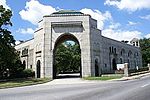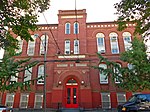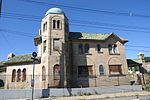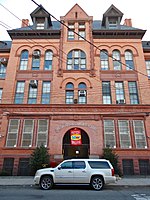Cypress Hills National Cemetery

Cypress Hills National Cemetery is a 18.2-acre (7.4 ha) cemetery located in the Cypress Hills neighborhood of Brooklyn, New York City. It is the only United States National Cemetery in New York City and has more than 21,100 interments of veterans and civilians. There are 24 Medal of Honor recipients buried in the cemetery, including three men who received the award twice. Although Cypress Hills was established to honor Civil War veterans, its grounds include the graves of soldiers who fought in the American Revolutionary War, Spanish–American War, Korean War and Vietnam War.Cypress Hills National Cemetery opened in 1862 and gravesites were exhausted in 1954. However, burials of veteran's spouses continues at the rate of approximately ten per year. The two sections of this national cemetery are located approximately one half-mile apart.
Excerpt from the Wikipedia article Cypress Hills National Cemetery (License: CC BY-SA 3.0, Authors, Images).Cypress Hills National Cemetery
New York Brooklyn
Geographical coordinates (GPS) Address Nearby Places Show on map
Geographical coordinates (GPS)
| Latitude | Longitude |
|---|---|
| N 40.688055555556 ° | E -73.881944444444 ° |
Address
11208 New York, Brooklyn
New York, United States
Open on Google Maps










